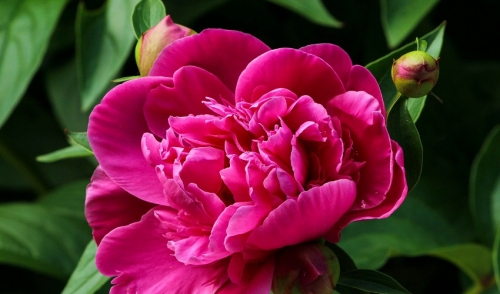
Winter Perennial Preparation
It is that time of the year again. The time has come for summer to end and for fall to begin. The days are no longer radiating with heat from the sun, but cooling down to that lovable fall temperature. Leaves are beginning to change and as fall begins, it is time to start thinking about preparing your perennials for winter. Before you begin preparing your perennial beds for winter you must first draw up a plan.
Winter preparation is the time to get started on making changes to your perennial bed. Be sure to write your ideas down and make any necessary changes before its too late. To begin winter perennial preparation you must first clean up. You want to remove any dead leaves and debris such as limbs and twigs. Old foliage has the tendency to harbor plants and disease during the winter. If you are the type of gardener that uses decorative items that are tucked away amongst your perennials, remove and store them for the season. These decorative items will last longer when stored away and not left out to suffer the damages brought on by the winter weather.
After you have completely cleaned your perennial bed, you should remove any plants that have gone to seed. Cut back any plants that are no longer blooming or the tops have died. When cutting back your plants in the fall, you want to cut them back about 8-10 inches above the ground. If you have perennials that are woody plants, refrain from pruning or cutting them back. Finally, do a thorough weeding around your perennials to make sure you removed the last of any weeds before the winter. If you find any plants that are not producing well or are no longer attractive, remove them. Take the time to find a perennial that will look better or produce more attractive blooms. Before winter make sure to divide those perennials that are early blooming from March to June and those that bloom later between late June and early Fall. Avoid dividing the later blooming perennials until the spring. Dividing these blooms too early can damage the plant. During the fall, if you find any of these plants growing too close together or crowding and spreading into unwanted areas, divide and move them appropriately.
Finally, to complete your winter perennial preparation, put a fresh layer of mulch around your perennials. Adding a deep layer of mulch will protect your perennials throughout the winter. Furthermore, it will prepare your perennial bed for additional mulching in the spring. It is ok to leave falling leaves on top of your mulched perennial beds. This will only add extra protection and nutrients to your perennials. Follow these tips to prepare your perennials for a good rest over the winter and a blooming spring and summer. When the time comes, your perennials will sprout greener and healthier than you ever anticipated.
